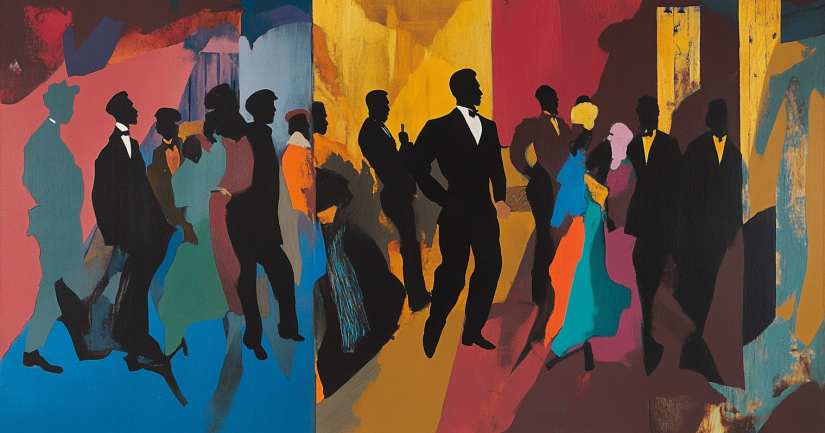
Trace the sequence of his inspiring life with Frederick Douglass Order of Events Quiz. Test Your Knowledge of His Life Events. The Frederick Douglass Order of Events Quiz challenges you to recall and correctly sequence key moments in his life. From his early years in slavery to his rise as an abolitionist leader, Douglass’s journey was filled with hardship, resistance, and triumph. Understanding the order of these events helps reveal how he fought for freedom and justice.
Douglass was born into slavery in Maryland around 1818. His enslavers denied him knowledge of his birth date, a cruel practice meant to strip people of their identities. As a child, he endured forced labor and separation from his mother. Later, his owners sent him to Baltimore to live with Hugh and Sophia Auld. This move changed his life because it gave him access to literacy, despite laws forbidding enslaved people from learning to read.
Douglass’s life was filled with pivotal moments—can you recall them all? If you’re fascinated by the structure of his story, explore how he used language to bring it to life in the Frederick Douglass Literary Devices Quiz. Then, sharpen your knowledge of the people who shaped his journey with the Frederick Douglass Character Matching Quiz. Ready for the ultimate challenge? Tackle the Narrative of the Life of Frederick Douglass Full Book Quiz and prove your expertise.
It’s Time – Frederick Douglass Order Of Events Quiz Awaits
Frederick Douglass’s Early Years
His Resistance and Struggles in Oder of Events
Education became Douglass’s path to liberation. He secretly taught himself to read and write, recognizing that knowledge was a powerful tool against oppression. However, his growing intelligence made him a target for harsher treatment. His owners sent him to Edward Covey, a man notorious for “breaking” enslaved individuals through brutal punishments. Instead of submitting, Douglass fought back in a physical confrontation, proving that he would no longer be controlled by violence.
The Escape to Freedom
After years of cruelty, Douglass planned his escape. In 1838, he disguised himself as a free Black sailor and traveled north. His bold plan worked, and he reached New York, where he officially became free. Soon after, he moved to Massachusetts and joined the abolitionist movement. His passion and eloquence quickly made him one of the most powerful voices against slavery.
Douglass’s Legacy as an Abolitionist
In 1845, Douglass published his first autobiography, Narrative of the Life of Frederick Douglass, an American Slave. This book exposed the horrors of slavery to a wide audience. Over time, he became an advisor to President Abraham Lincoln, an advocate for women’s rights, and a champion for equality. Even after the Civil War, he continued fighting for justice, ensuring that his legacy extended beyond the abolition of slavery.
Why This Order of Events Quiz Matters
The Frederick Douglass Timeline Quiz helps you understand how his experiences shaped his activism. His journey was one of perseverance, defiance, and leadership. Recognizing the order of events in his life provides a deeper appreciation for his fight for justice.
Take the Frederick Douglass Timeline Quiz now to test your knowledge of his remarkable life and legacy!
Test your knowledge with: Narrative of the Life of Frederick Douglass Quizzes!
Frederick Douglass Plot – FAQ
Frederick Douglass’s narrative, Narrative of the Life of Frederick Douglass, an American Slave, follows his journey from being born into slavery to achieving freedom. It reveals the harsh realities of slave life, Douglass’s growing awareness of slavery’s injustices, and his quest for freedom. This story powerfully testifies to resilience and the human spirit’s fight against oppression.
Douglass vividly recounts his harsh experiences as a slave, detailing brutal physical and psychological abuse, deprivation of basic rights, and constant threats of violence. His narrative highlights how slavery dehumanizes both slaves and slaveholders.
Education is central in Douglass’s narrative, as he sees literacy as a pathway to freedom and empowerment. Learning to read and write marks a turning point, enabling him to articulate his thoughts and challenge slavery, ultimately leading to his independence.
Douglass’s narrative became a vital tool for the abolitionist movement. By sharing his experiences, he revealed slavery’s brutal realities to a broad audience. His eloquent account helped garner abolitionist support and emphasized the need to end slavery.
Douglass’s narrative profoundly impacted society by raising awareness of slavery’s horrors and inspiring many to join the abolitionist cause. It remains a seminal work in American literature, continuing to educate and inspire readers on freedom, equality, and justice.
